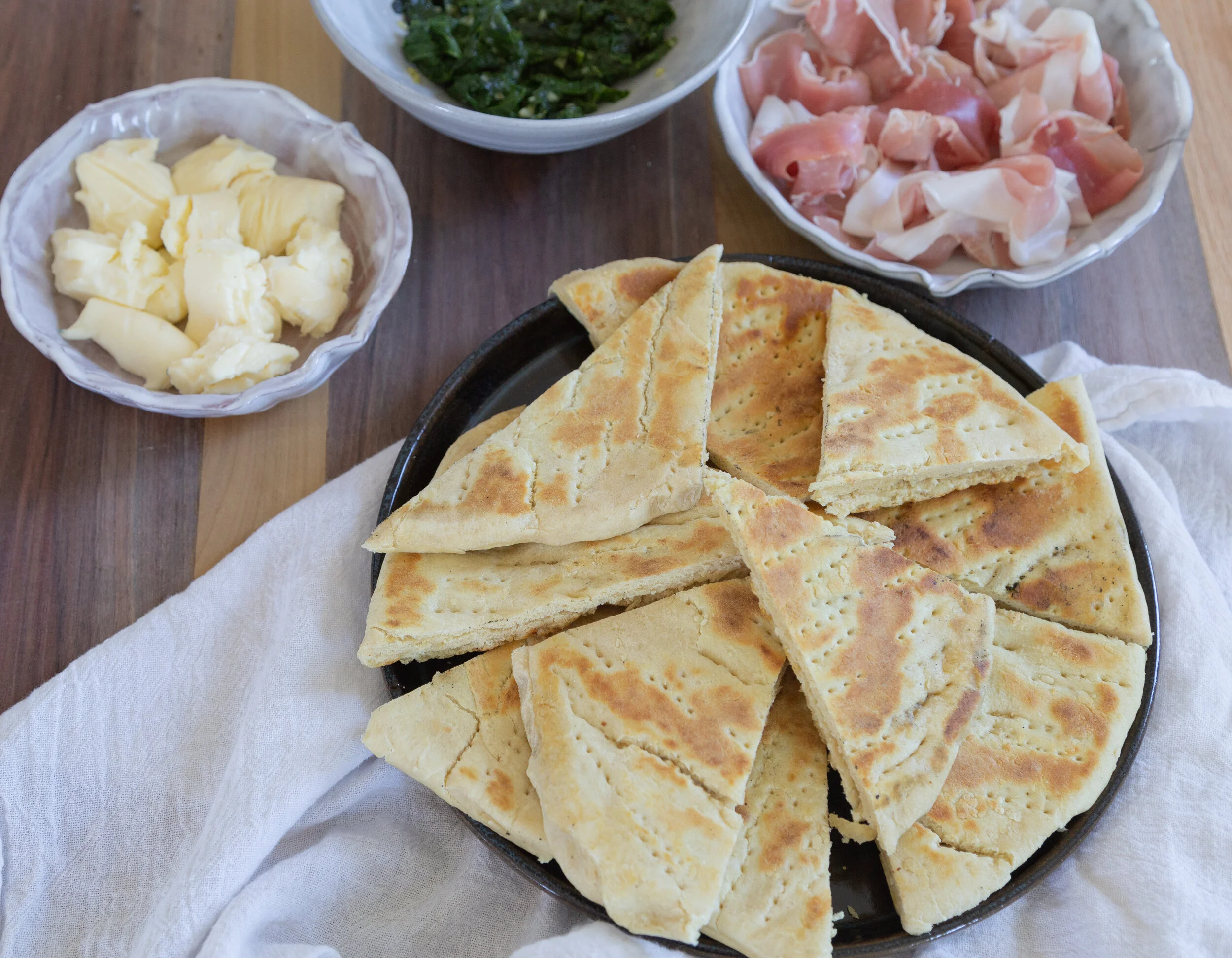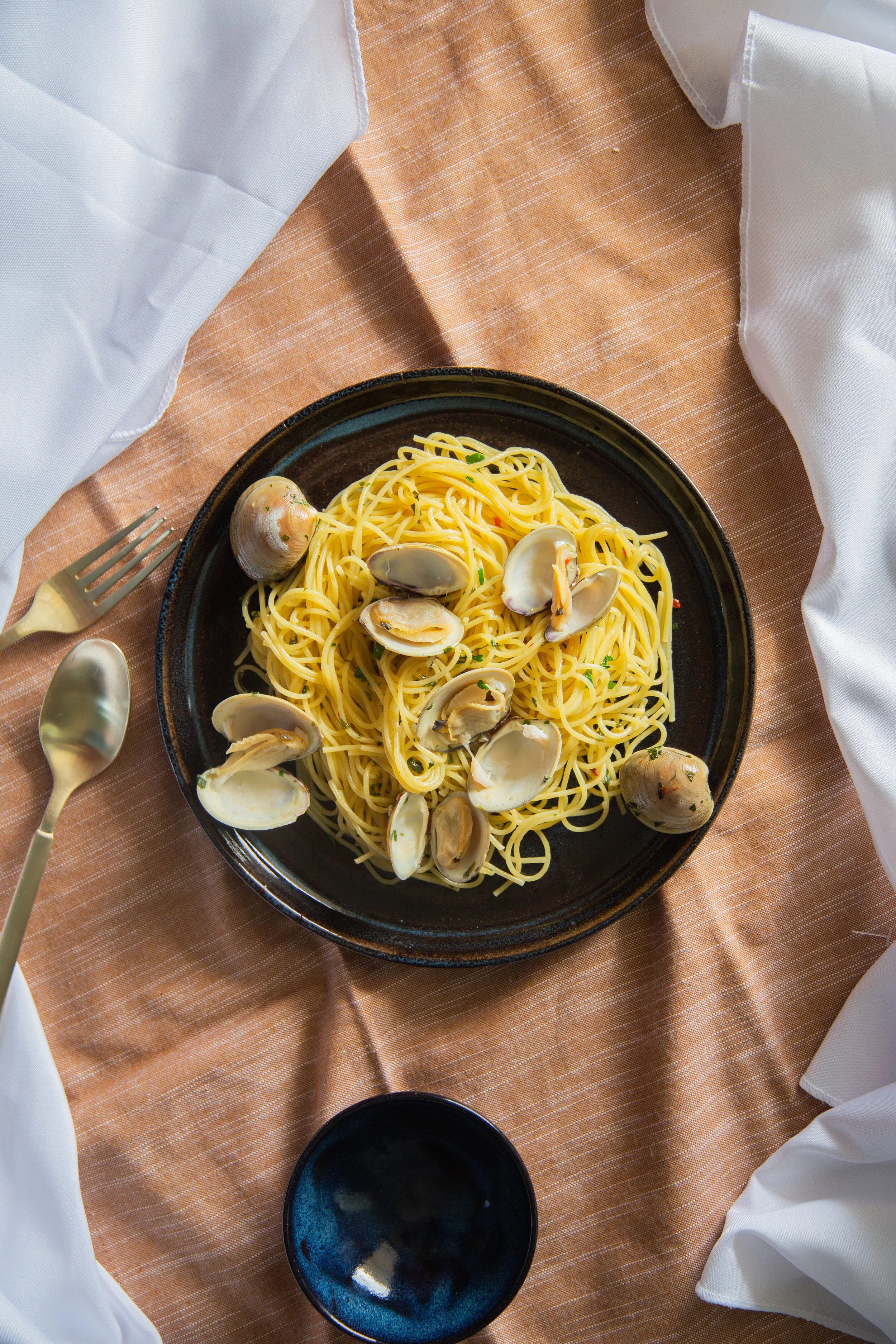Arancini di Riso - Sicily's Crispy Street Food
Crispy, crunchy, chewy, cheesy… is there a single word to describe arancini that doesn’t result in me salivating?! These little globes of fried risotto and cheese are beyond delicious. They’re portable, savory and iconically Sicilian.
My first big trip abroad allowed me the opportunity to explore Taormina’s aquamarine waters and the massively beautiful Catania, Sicily’s second city. Our time there was beyond magical. But without a doubt, our appetites left Sicily forever changed. Fresh sea food right from the market, delightfully sweet desserts (looking at you cannoli!), fresh lemons and… arancini.
When deciding what recipe to focus on for the Sicilian region… I knew I had my work cut out for me. Sicilian food is uniquely global, with influences from Arabian and Spanish cultures and more. How does a girl choose just one recipe?
The truth is, arancini is special. Throughout Southern Italy, it’s common to find street vendors sell these bad boys, scalding hot and fresh out of the fryer. We certainly had our fair share of them first-hand on our late evening strolls! Food is nostalgic, so I knew creating these at home would transport me back to those sun drenched days.
Regional Identities in Italian Cuisine
One of my main personal goals in creating the Roaming Italy project was to delve into the deep waters of regional Italian cooking. Italian food is incredibly diverse. As an American, I think there’s a blatant ignorance we have here in that regard. (Yes, Americans, can we admit that our lack of knowledge is embarrassing?!)
I’ve been reading this incredible book on Italian regional food and it’s been so enlightening. (P.S. Italian food historians… I’d love to collaborate and help share your knowledge here! As a beginner/learner of Italian food culture, I know there is so much I’ve got to learn. Let’s share your expertise here!)
For most of Italy’s history, its landscape was dotted with individual regions with exclusive identities. I like to think of them like individual kingdoms… each with a distinctive history, set of flavors, products, ingredients and characteristics.
Until the mid-19th century, when Italy became a unified country, these “kingdoms” operated individually - shaping their regional cuisines based on their climate, natural landscapes and proximity to other countries (and military invasions). This is why each region of Italy has a rich, complex and individual cooking tradition. It’s a beautiful thing.
Sicily - A Crossroads of Colonists
Sicilian food is unique to its rulers and the influence of those that once dominated its trading routes. Truly, Sicily is a tapestry of cultural influences - especially in its food!
Arancini dates all the way back to the 10th century in Sicily, when the island was under Arab rule. A time when apricots, sugar, citrus, saffron, raisins, pine nuts and cinnamon were introduced to the regional dishes of the island. Much later, the Spanish introduced cocoa, corn, turkey and tomatoes, while in western parts of the island, influences of Northern Africa can be found in their use of couscous as well.
Like I said… a total tapestry of cultural influences… thanks mostly to its colonists.
Here’s a quick summary of the many rulers and colonists of the island, in terms of its culinary history! (Keep in mind, this is a quick, quick summary… I’m barely scratching the surface here! I’d love to learn more about Sicilian food history as I continue this project!)
GREEK & ROMAN RULE
In 734 B.C., the city of Syracuse was founded by the Corinthians. This time of Greek rule was called dulci in fundo, a time of honey, milk, ricotta, fresh fruit and sweet wines. The land was relatively untouched, but plush in vegetation and wildlife. Figs, pomegranates, walnuts, grapes, olive trees and vineyards were introduced to the area, as well as fresh honey that was used as offerings to the goddess Aphrodite.
While under the control of the Roman Republic, Sicily was introduced to durham wheat, fava beans, and grapes to make wine. Ceres, the Roman goddess of agriculture, was said to have taught Sicilians milling and bread making. Gotta love a goddess who knows her carbs!
ARAB RULE
By 827 A.D., the Arab Muslim troops by the name of the Saracens established themselves as rulers of the island by taking over Palermo, Messina, Enna and Siracusa (… and moving the capital from Siracusa to Palermo). This is why the west coast of Sicily is known as the “Arab side” and the east is thought of as the “Greek side.”
Arab colonists introduced a whole new world of imports and crops to Sicily. From sugarcane, jasmine, roses to saffron (found in our recipe today!), cinnamon, cloves and sesame, the Arabian imports were flush with variety unseen before. As mentioned below, the Arabs developed incredible irrigation systems… but they also created some of the most iconic Sicilian desserts like cannoli, ricotta cakes and marzipan too!
NORMAN RULE
In 1060, the Normans conquered Sicily… however, this time, its conquerers leaned into the established flavors and adopted the culture, retaining the Arabian food influence along with it. It’s said that Roger II hired Arab chefs to prepare his meals because he simply loved it that much!
SPANISH RULE
Finally, the Spanish nobility of the House of Aragon expanded the Sicilian palate. Most notably, tomatoes and cacao were introduced. Chocolate desserts became incredibly sought out by the Sicilian upper class. (Can you blame them!?) It wasn’t until 1860 that Spanish rule ended when Sicilian “Redshirts” overthrew the government. Five months later, the unification of Italy changed the country into how we know it today.
The History of Arancini
Arancini translates to little oranges, a fitting name for their size, shape and orange color, and their portability to boot! These fried rice balls are traditionally prepared a variety of ways, from a ragu sauce with green peas, butter and mozzarella, eggplant and tomato, mushrooms… even sweetened with ricotta, sugar and cacao. But no matter how they’re prepared, arancini are always hot, crispy, fried and totally drool-worthy.
Most foodies believe rice is a northern Italian specialty. And they’re not wrong! The farming of rice in Sicily has no connection with the rice farms of Piedmont or Lombardy. Rice’s arrival in Sicily can be thanked by the Arabian rule of the island. The Arab's had an incredible system of irrigation systems in Sicily to maintain the need for water. That being said, Sicily looked much different then! Natural lakes, rivers and streams were abound, and Arabian innovations of agriculture allowed rice to be cultivated systematically.
Crisped and fried arancini can be found as early as the 900’s A.D.s, when Arab rule reigned… but more interestingly comes the theory that these treats were breaded and fried because they held together for long trips, easily transportable and super filling. I love this little tidbit because even today arancini is considered to the be the perfect street food because they’re easy to carry around when exploring the city!
The arancini’s continued popularity was especially noted in the 17th century in Palermo and Trapani. Culturally, arancini were served for the festival of Saint Lucia on December 13th, a time when breads were avoided. The city of Palermo would fill with stands, parades and lots of fun abound. Arancini were a specialty item locals loved during these celebrations.
Without a doubt, Sicilian arancini are a historically important dish to the region’s culture. A trip to the island without trying one fresh from the frier is just a sin! That’s why I’m so excited to remake this classic (as best as I can) in my own kitchen!
Arancini di Riso Recipe
Arancini di Riso
ROAMING ITALY
Risotto
2 1/2 cups Arborio rice
2 large eggs
4 tbsp. (1/2 stick) unsalted butter
1 cup grated Parmigiano-Reggiano cheese
1 tbsp flat leaf parsley
Filling
7 oz browned veal or pork, minced (with a little of its gravy)
Pinch powdered saffron
1/2 cup fresh peas, cooked with onion
4 oz. unsalted diced mozzarella - cut into bits
Crumb
6 oz. breadcrumbs
Oil for frying (about 6 cups)
Salt and pepper
Optional side: marinara sauce
Region: Sicilia
Process
Cook your arborio rice in 4 cups of lightly salted, boiling water. Make sure to tend your rice as it boils, continually stirring until the water is soaked up by the grains (about 15 minutes).
When your rice is cooked, but not crunchy, remove from heat.
Add butter and 1/2 cup of grated Parmigiano-Reggiano and stir. Once combined, stir in one egg.
Spread risotto mixture evenly on a parchment-lined baking sheet. Chill for about an hour in the fridge.
Cook your peas with onion, adding your minced pork once soft. Season with salt and pepper. Once your pork has browned, add saffron, the remaining 1/2 cup of grated Parmigiano-Reggiano and diced mozzarella. Stir well.
When your rice has cooled, it’s time to make your risotto balls! Wet your hands before assembling. Scoop about ¼ cup of your risotto into your hands and form into a patty in your palm.
Scoop a bit of your pork mixture into the center of your palm. Shape your risotto so it completely encases the mixture, and then roll into an orange sized ball.
Place your risotto ball on a parchment paper lined baking sheet. Repeat with remaining risotto and pork mixture.
Once assembled, place your risotto balls in the fridge for 10-15 minutes to let them firm up.
Prepare breadcrumbs in a shallow bowl. Whisk up your remaining egg in a separate bowl. Take each cooled arancini ball and soak it in the egg mixture, letting excess drip off. Then coat the ball with your breadcrumbs. This can be placed on a baking sheet to await being fried. Continue process with your remaining risotto balls.
Pour oil into a medium sized, heavy-bottomed pot. You want about 2-3 inches of oil deep. Heat over medium or until the oil reaches 350°.
With a spider (or slotted spoon), carefully drop your arancini balls into the oil. Let them fry about 6-8 minutes.
Transfer to paper towels or a wire rack to drain. Add a dash of salt to each fried ball.
Serve warm with marinara! Enjoy!
Just For Fun
This article is an amazing summarization of arancini and how they represent Sicilian history all in one bite!
How cute is this arancini themed tote bag?!
Not into sticky hands? These molds will do the trick!
This Sicilian cookbook is on my wishlist! Lots of really delicious meals and a deep dive into the three strands of Sicilian cooking to boot.
For the history buff - this nonfiction book is incredibly insightful on Sicilian history!
As a hygge lover myself, I love that this candle is inspired by Sicilian lemons. Scent always has a way of transporting me to memories, like summer in Sicilia.
Luke is my resident ceramic maker, so if you’re ogling over this serving dish or any of the other pieces in this shoot… reach out to him!



























